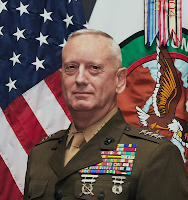
Normally I only do one post a week, but the Politico (a source I never heard of before and cannot vouch for their political leanings or view) 11/23/11 article “Cross removed at base in Afghanistan” (seehttp://www.politico.com/news/stories/1111/69039.html) struck me as something worth covering.
As shown in the photo (from the same source), apparently there was a very large cross on the outside of the chapel at Camp Marmal. A Facebook page about the camp quotes Wikipedia “Camp Marmal is the largest base of the Bundeswehr outside of Germany. It is located outside of Mazar-e Sharif, Afghanistan, at the foot of the Hindu Kush mountains. The camp was opened in September 2005. The camp gets its name from the bordering Marmal Mountains.”
The article was picked up by UPI and probably some others. According to the article the cross was taken down because it violated DOD rules.
As I recall one of the senior generals in Afghanistan, perhaps General McChrystal was instrumental in removing signs that the American force were ‘distinctly American” and alluded to the fact that ISAF was going to be there for a while.
Should the base CDR, be they American, German or any other NATO nation have permitted the cross in the first place? Does a large religious symbol of a Western religion offend Afghanis? What would the effect have been if there was a Star of David or a Wiccan Symbol?
Does the feeling of comfort to Christian soldiers (as quoted in the article) outweigh the likely negative perception of the Afghans?
I’ll leave it to you. If you have one, enjoy the long Holiday weekend.




